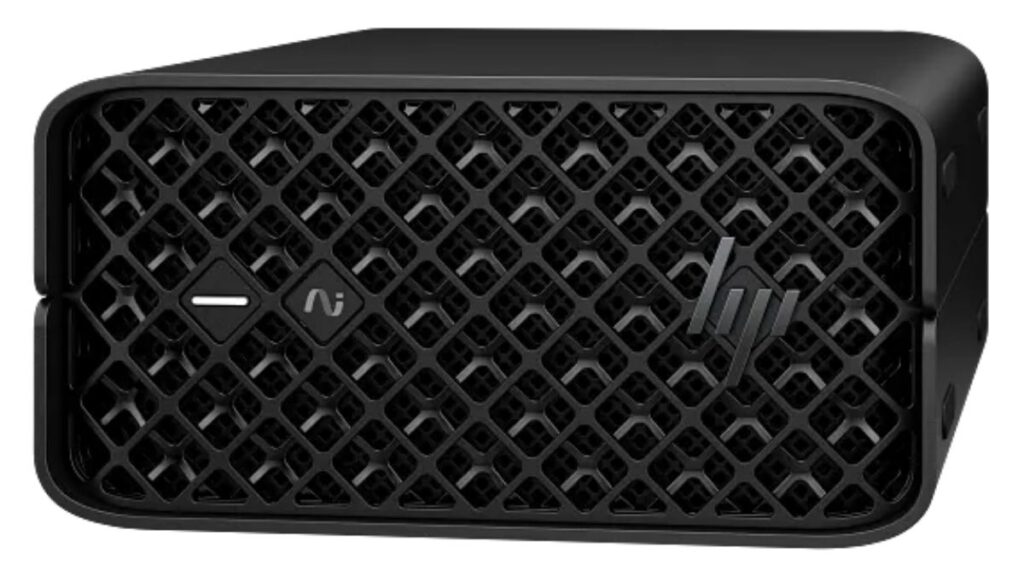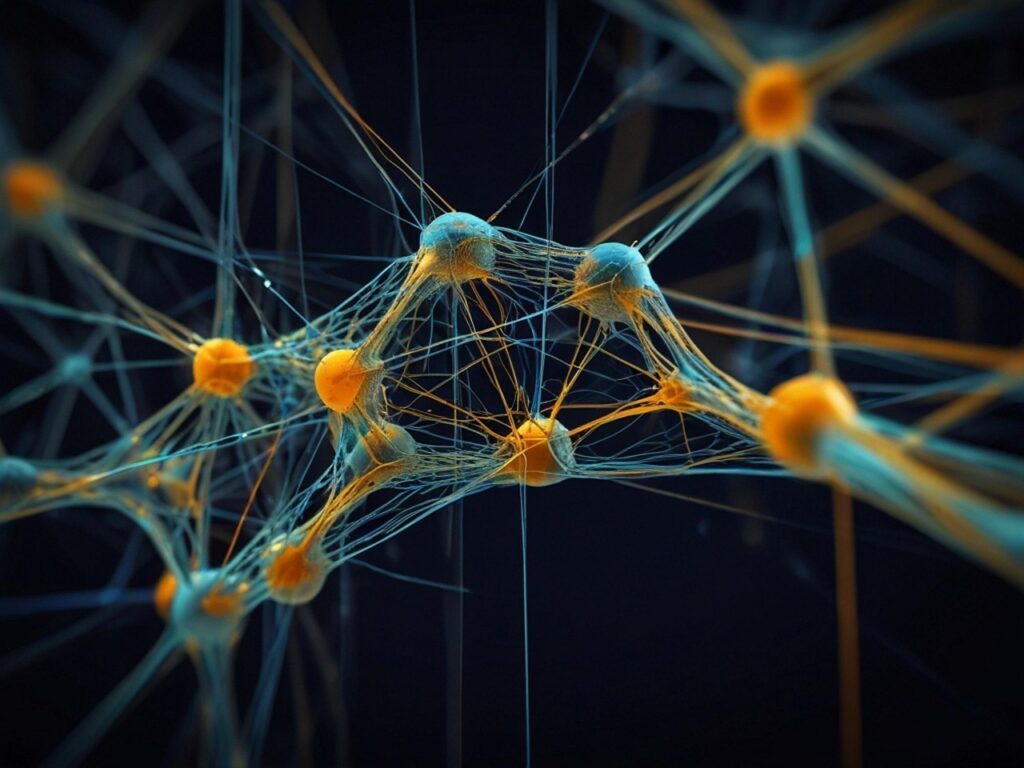The quest for a perfect artificial intelligence (AI) development environment often conjures images of massive server racks, liquid-cooled supercomputers and enough blinking lights to power a small city. But here in Bend, Oregon, where a discerning eye appreciates efficiency and smart design, a quiet revolution is brewing in the world of AI development: the rise of the personal workstation tailored for AI. Enter the HP Z2 Mini G1a Workstation. This compact powerhouse, with its focus on energy efficiency and, crucially, its integrated neural processing unit (NPU), might just be the unsung hero that democratizes AI development and solves one of the biggest paradoxes of the “AI PC” era.
The NPU Advantage: AI’s Dedicated Brain on Your Desk
What exactly is an NPU, and why is its presence in a workstation like the Z2 Mini G1a a game-changer for AI developers? Traditionally, AI workloads on PCs relied on either the central processing unit (CPU), which is good for general tasks but slow for AI, or the graphics processing unit (GPU), which is fantastic for parallel processing but power-hungry and often overkill for inference. An NPU is a specialized processor designed specifically to accelerate AI tasks, particularly inference (running AI models) and certain machine-learning operations, with incredible energy efficiency. They combine both memory and computation capabilities on the same chip, enabling them to process data locally without sending it to the cloud.
For an AI developer, having an NPU in your workstation is akin to having a dedicated, low-power, high-efficiency AI co-processor right at your fingertips. This means you can run and test the PC AI code you develop directly on the very hardware it’s intended for. Instead of relying solely on cloud instances for every test or needing a power-guzzling GPU for basic inference, the NPU allows for rapid iteration and debugging of on-device AI models. This local capability is vital for optimizing performance, ensuring privacy (as data doesn’t leave the device) and reducing development costs associated with cloud compute time. It’s like having a tiny, dedicated AI sandbox that sips power instead of guzzling it, making those all-night coding sessions slightly less taxing on your electricity bill.
The AI PC Paradox: Hardware Ahead of the Apps?
One of the most perplexing challenges in the current “AI PC” landscape is the lack of a robust ecosystem of AI-native applications that truly leverage the integrated NPUs. Many new laptops and desktops are shipping with NPUs, but the everyday software isn’t yet fully optimized to take advantage of them. This creates a chicken-and-egg problem: Developers need hardware to build apps, but users need apps to justify the hardware. As The Register aptly puts it, “The biggest issue is still the lack of a killer app or software that justifies the investment” in AI PCs.
The HP Z2 Mini G1a Workstation, however, helps bridge this gap from the developer’s side. Providing an NPU (up to 50 TOPS from its AMD Ryzen AI Max PRO processor) in an accessible form factor empowers developers to create the very AI applications that will eventually define the AI PC experience. They can build, test and refine AI functionalities directly on a device that mirrors the capabilities of future consumer machines, ensuring that when the apps do arrive, they run flawlessly. This is about enabling the future, not just marketing it.
Cloud vs. Local: The Case for the Mini Workstation
While the headlines often focus on massive cloud-based AI models and the immense compute power required for training, the reality for most AI developers is different. The vast majority of large language models (LLMs) are indeed trained in the cloud, and much of the heavy-duty inference for massive models is also performed there. This means that for many AI development tasks, particularly those involving fine-tuning or deploying pre-trained models, you don’t necessarily need a super powerful, room-heating workstation. In fact, some experts argue that local AI may process data with lower latency and a better contextual understanding compared to AI running in the cloud, which is appealing for developers working with LLMs.
In this context, a small form factor workstation like the HP Z2 Mini G1a becomes an incredibly economical and practical choice. Its energy efficiency means lower operating costs, and its compact size allows it to fit seamlessly into any workspace, from a bustling office to a quiet home studio. It’s the perfect local companion for cloud-based AI workflows, handling pre-processing, local testing and post-processing tasks without needing to rent expensive cloud GPU instances for every minor iteration. It’s like having a highly capable local chef who prepares all your ingredients perfectly before sending them to the gourmet cloud kitchen for the final cooking.
Beyond AI: Other Advantages of the Unique Z2 Mini G1a
The HP Z2 Mini G1a’s appeal extends beyond its AI development prowess. As part of HP’s Z2 Mini series, it inherits a host of advantages that make it a standout workstation:
- Compact Design: Its diminutive footprint allows it to be placed discreetly on a desk, mounted behind a monitor or integrated into specialized environments without taking up valuable space. It’s designed to “fit anywhere.”
- Professional Certifications: HP Z2 workstations typically come with independent software vendor (ISV) certifications, ensuring optimal performance and stability with professional applications in fields like CAD, design and content creation.
- Quiet Operation: Unlike many high-performance workstations, the Z2 Mini series is renowned for its quiet operation, ensuring your coding zen isn’t disrupted by whirring fans.
- Robust Build Quality: HP’s Z line is built for reliability and durability, essential for continuous development cycles and backed by rigorous MIL-STD 810H tests.
- Versatile Connectivity: Despite its size, it offers a comprehensive array of ports for connecting multiple displays (up to 4 at 4K resolution) and peripherals.
- Rackable Design: It can even be racked for maximized density in data centers (5 units across a 4U rack), offering flexibility for deployment.
Wrapping Up: The Future of AI Development is Small, Smart, and Efficient
The HP Z2 Mini G1a workstation, with its potent combination of energy efficiency and an integrated NPU, is poised to become a quiet but crucial force in AI development. By empowering developers to run and test on-device AI code locally, it directly addresses the current gap in AI PC application ecosystems. Its economical, small form factor makes it an ideal complement to cloud-based AI training, while its broader advantages in design, quiet operation and professional certifications solidify its position as a versatile powerhouse. In a world increasingly driven by AI, the Z2 Mini G1A offers a compelling vision for how personal hardware can empower innovation, proving that sometimes, the biggest breakthroughs come in the smallest packages. Be aware, this thing is so popular it is currently sold out.
- The Mighty Mini: Why HP’s Z2 Mini G1a Workstation Is the Unsung Hero of AI Development - July 7, 2025
- The HP OmniBook X Flip 2-in-1 16-Inch: Your New Digital Swiss Army Knife (Now in Glorious Atmospheric Blue) - June 25, 2025
- The Open AI Avalanche: Why AMD’s Collaborative Spirit Is Outmaneuvering NVIDIA’s Empire - June 22, 2025



